This is a guest contribution from Jawad Khan.
Do you have a mentor, or have you ever tried looking for one?
If yes, you’d know that credibility, apart from the right expertise, is the number one quality a mentor should possess.
A person doesn’t deserve to mentor you (or anyone) if he isn’t dependable and changes views like clothes.
In other words a successful mentor needs to have a brand image that epitomizes trust, expertise and consistency.
A Powerful Brand Image Is Crucial for Successful Blogging
Successful blogging is a lot like mentoring.
Ideally, your blog readers should look up to you for advice and direction. You should be the expert that helps them solve their biggest problems and overcome the most complex mental blocks.
But that will only happen when you intentionally work on building your brand image.
Just think about it.
Why would someone purchase your coaching program or your “Epic Guide to Freelancing” or “30 Day Affiliate Marketing Course” when a million other people are selling similar products?
It’s your brand image and how you’re perceived by your readers that does the selling for you.
When people trust you, they buy from you even when your competitors have better products.
Branding is also important from an SEO perspective.
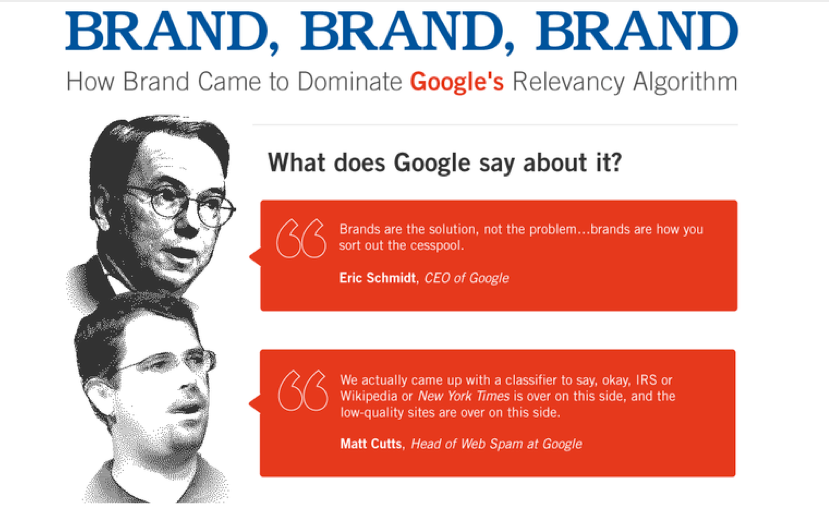
Source: SEObook
Brands not only rank higher in search results, they’re much likelier to avoid a Google penalty even when they’ve violated its guidelines.
Not sure how to brand your blog? Let me help me break it down for you.
1. Share Your Brand’s Story and List Your Core Values
Powerful brands have powerful stories. They serve a clear purpose and do business for a reason. A brand’s story allows it to connect with its audience and help them own the brand’s experiences.
If you think your blog doesn’t have a story, think harder.
What motivates you to blog every day? What purpose are you serving? What change are you trying to make?
Most of us have a good reason for doing what we do. You just need to think harder to find it.
Darren’s keynote at the World Domination Summit is a pretty good example of a powerful story.

When you have a powerful story and purpose behind your blog, it also makes it easier for you to identify your brand’s core values.
For example, some of you core values as an affiliate marketing blogger can be
- To find the best and most useful products for my audience that can help them succeed.
- To only endorse and promote products that I have tried myself and have full confidence in.
- To be empathetic towards my readers, understand their needs and help them solve their problems
Many bloggers list down their core values by creating a blogging manifesto. You can even come up with a catchy brand slogan, based on your values, using this free slogan generator.
Listing down your core values and sharing them with your audience helps you build trust and immediately connect with your ideal readers.
2. Choose a Brandable Domain Name and Invest Your Blog’s Design
If you’re still looking for exact keyword match domains (EMDs), you need a change of mindset.
I can understand if you choose an EMD for a micro niche site, but if you’re thinking long-term, and want to create a blog that people remember, treat your blog’s URL as a brand name.
A brandable URL not only gives you a unique identity, while clearly representing your core offer, but also makes your brand name easier to remember.
ProBlogger, the brand name, is a great example. The same goes for Backlinko, QuickSprout, Smart Blogger and many others. They’re all very popular blogs with branded URLs. If you’re looking for ideas, you can use this business name generator by Freshbooks or visit a branded domain marketplace to find niche domain ideas.
The other aspect of a strong online brand image includes an eye-catching logo, which represents the mood of your brand, and a website design that is not only pleasing to the eye but also makes it easier for your readers to focus on your content and the actions that you want them to take.
You need to be precise about the colors you choose for both these aspects of your brand, especially the logo.
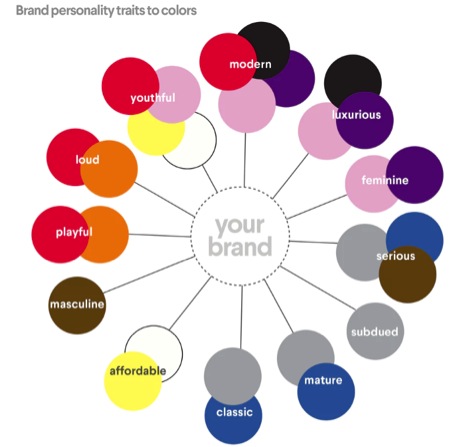
Source: The Business of Color [infographic by 99Designs]
Once again, the new clean design of ProBlogger is a pretty good example. It’s clutter free and makes the content more prominent with an easy to read font.
CopyBlogger, with lots of empty spaces, is another example of a clean design that makes reading easy.
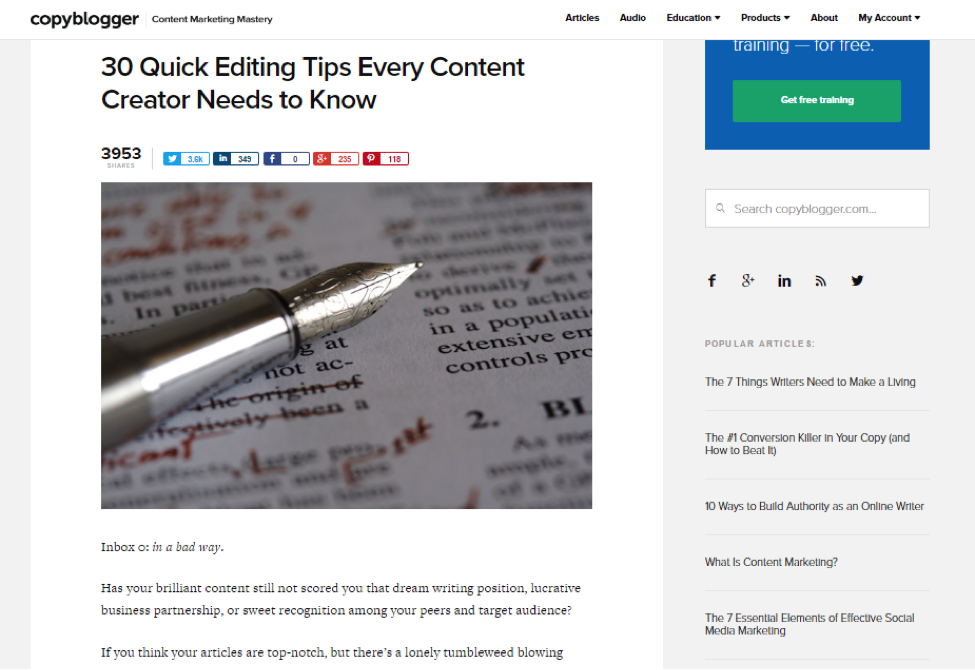
You can find high quality and responsive WordPress themes on ThemeForest (recommended by Darren) or, if you like to do things yourself, follow this mammoth step by step guide for setting up a WordPress blog.
3. Solve Problems With High Quality Long-Form Content
Long vs. short posts, quantity vs. quality, users vs. Google – these are all never ending debates.
But I’ll make this easy for you.
To become an authority in your niche and establish a powerful brand image, you need to create content that solves problems of your audience so comprehensively that they become life-long fans and always seek your advice when they’re stuck.
Can you create such comprehensive content in 200 words? Can you give them step by step directions and solve their problem in 500 words?
If no, what’s the point of creating short content when it doesn’t establish you as an expert?
Don’t tell me about Seth Godin and a few other celebrity bloggers. You’re not in the same league yet and your short content won’t have the same impact, please accept that fact.
The other reason why you need to create longer content is search engine traffic. More than 75% of users click the first three results on a search page. And you’re much likelier to land a spot in the first 3 search results if you create longer content.
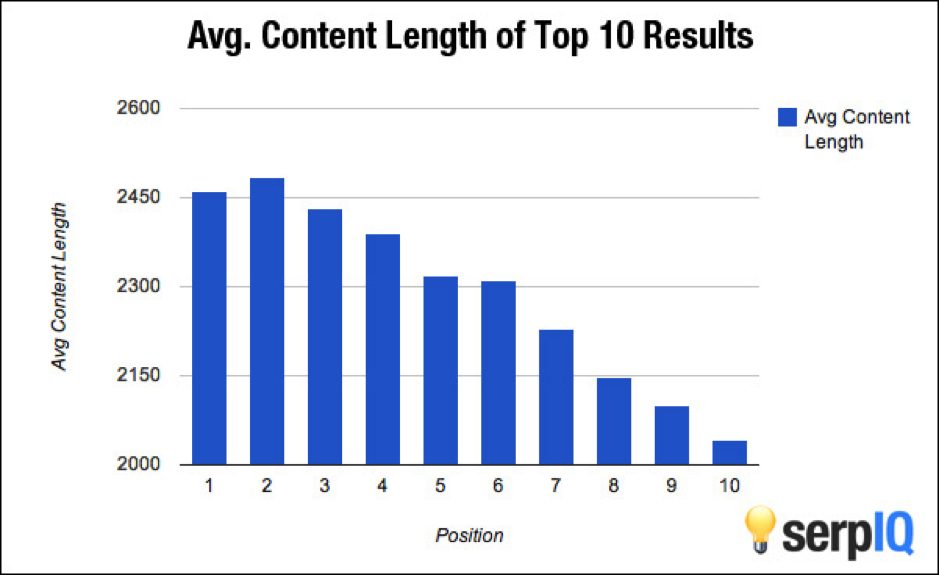
As you can see, the average length of the top search results is well over 2000 words.
So when your objective is brand building, focus on creating detailed and in-depth content that solves problems of your readers. Don’t blog about your products all time, focus on your customers. You can do that no matter what industry you’re in.
Here’s a really good example of a conventional business blog focusing on the problems of its ideal customers. This is the kind of content that builds your image as an expert brand.

Source: Vive Health
Here’s another good example of a business blog providing solutions to its readers. Most people visit coupon sites because they’re looking to save money and find discounts. So this particular site created a several thousand word guide to help its readers.
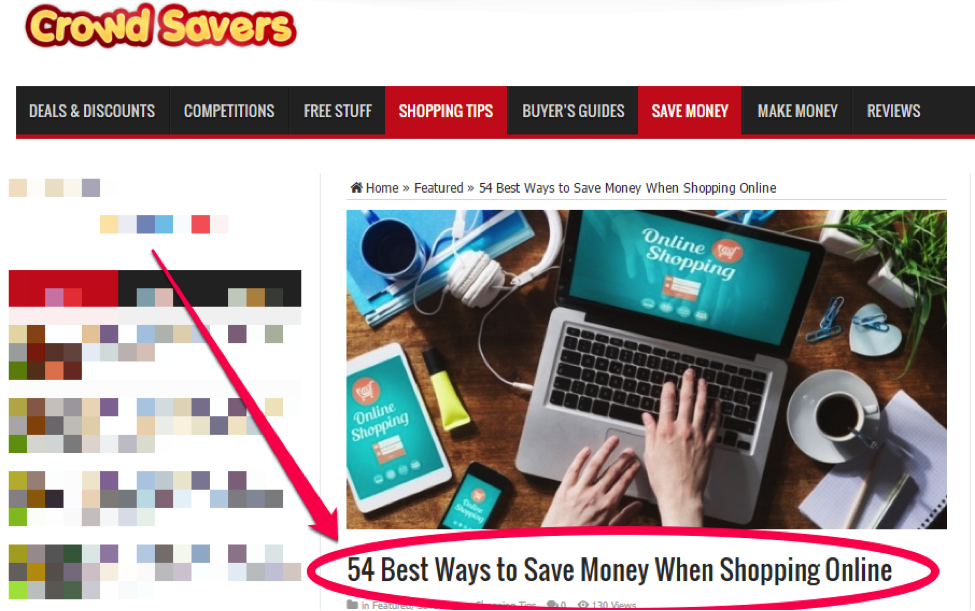
Source: Crowd Savers
eCommerce giants, Shopify have taken this to a completely different level. Instead of creating content only about their product, they regularly publish detailed eCommerce case studies, how-to articles and step by step guidelines that help their customers succeed in their businesses. They’ve even created an eCommerce encyclopedia for small businesses with in-depth articles and resources for their customers.
In short, when you create content that solves the problems of your audience, you eventually become their go-to source for everything related to your industry.
4. Add Snapshots, Data References and Infographics To Your Blog Posts
Publishing 2000+ word blog posts is great. But when you’re putting so much effort in creating blog content, why not make it truly epic by backing your arguments with data references and explaining your tips with snapshots.
Doing this will not only add more weight to your content, but will also make it look better than your competitors. Most bloggers take the easy route by just telling people what to do.
By using snapshots, you can raise the bar and show your audience exactly how to do something.
You can use Evernote Web Clipper, a free browser extension for Windows and Mac, to quickly create snapshots and add annotations to explain your points.
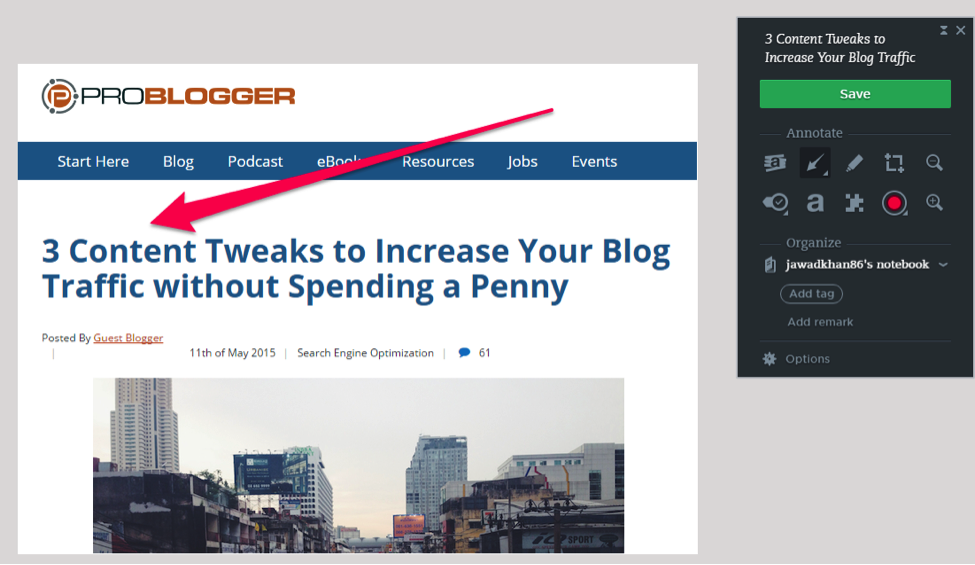
Images and snapshots immediately make your content more consumable and keep the readers engaged.
In fact, visual content is so useful for branding, that I strongly recommend making infographics a key part of your content strategy.
This has two advantages.
Infographics are not only among the most frequently shared content types, which results in more traffic and backlinks, but also help you stand out from your competition and strengthen your brand image.
There are dozens of free tools like Canva and Visme that can be used to create infographics. As an added resource, keep these infographic design tips in mind.
However, if you really want your content to stand out, try making short screencasts, webinars and explainer videos a part of your content strategy as well. It’s much easier to create video content because of the different screencast tools and explainer video apps like PowToon.
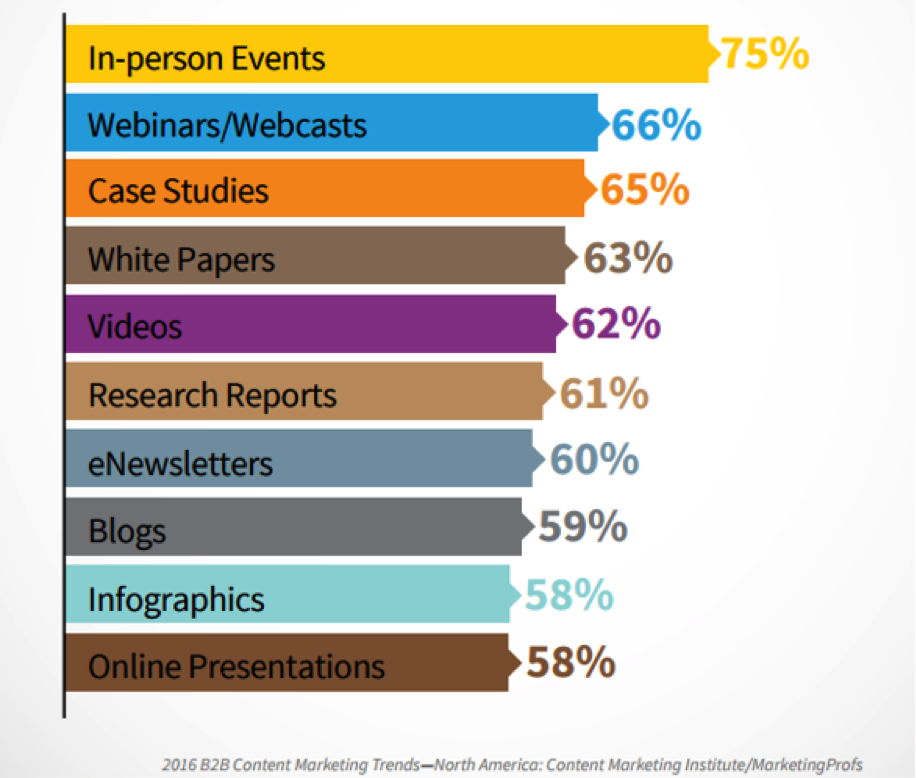
Source: Content Marketing Institute
A joint study by MarketingProfs and Content Marketing Institute found that 66% marketers consider webinars and videos the most effective forms of content for branding and lead generation.
In short, your content becomes much more powerful when you don’t just tell readers what to do, you show them how it’s done using visual content.
5. Feature in Other High Authority Publications to Borrow Credibility
Guest blogging may not be the best SEO strategy anymore, but it’s still one of the most effective ways to build your brand image by borrowing credibility from other authority publications.
When people see your name on websites like The Huffington Post, The New York Times or CopyBlogger and Hubspot (for marketers) they immediately start considering you someone worthy of their attention.
Forget guest blogging for backlinks. Brand building is the real benefit of featuring on other authority sites.
You’ll see this in action on almost every influencer’s website.
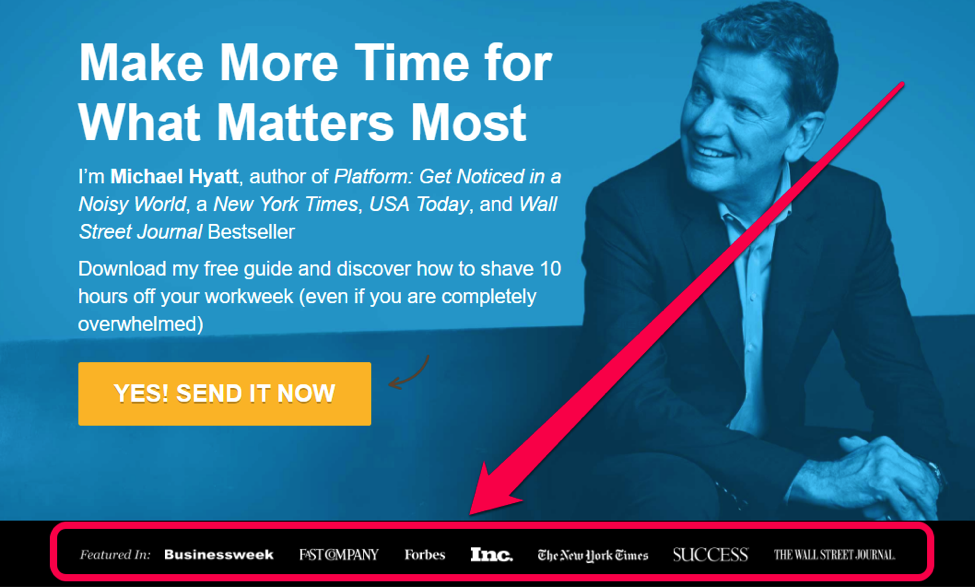
Simply identify the top blogs and publications in your niche, and contact them with a well-researched guest post. Most blogs and websites would be happy to publish your piece as long as it follows their editorial guidelines and offers quality information.
An alternate approach, which I’ve found useful, is to connect with influential bloggers, who write for different authority sites, on Get Reviewed and ask them to feature your brand in their articles. This might cost you a few dollars but it would save you from the hassle of writing and pitching guest posts.
6. Start a Facebook Group and Host Facebook Live Sessions
There are hundreds of social networks on the web with billions of combined users. But Facebook is still by far the most effective platform to build your audience from the scratch.
Facebook Groups in particular are engagement powerhouses that can be leveraged for community building and lead generation.
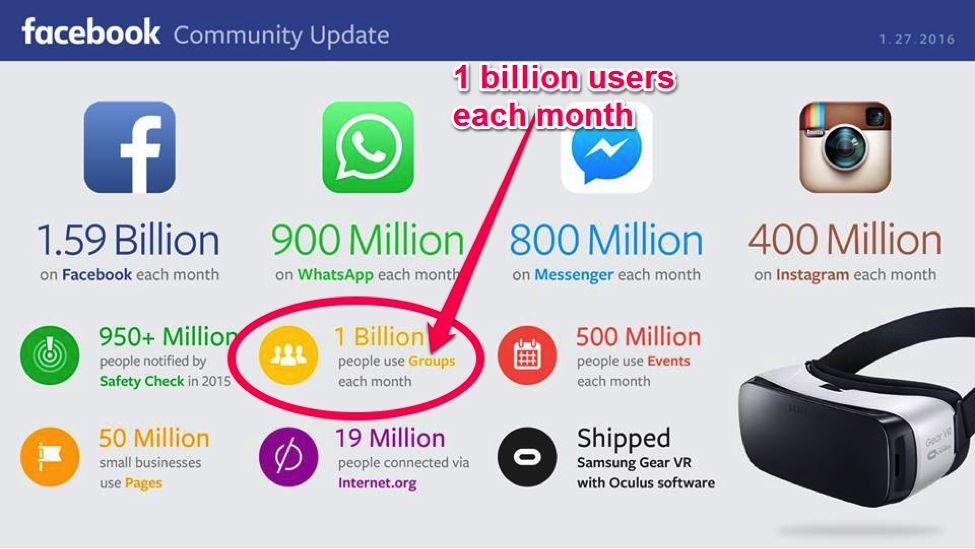
If you’re looking to strengthen your brand image and connect with your target audience, I strongly recommend starting a Facebook group of your own.
Promote your group using Facebook ads and try building a community around your brand. Engage with them regularly, share your knowledge and answer their questions.
In addition, start weekly Facebook Live sessions on different topics and invite people to ask questions. Give them live demonstration of your expertise.
For example, if you’re a copywriter, perform live copy audits of different websites. If you’re a designer, offer live design critique and share your feedback with your audience.
This strategy not only boosts engagement with your audience but also turns them into brand advocates and word of mouth marketers for you.
Wrapping Up
It doesn’t matter if you’re an affiliate marketer, a business coach or a product seller, the strength of your brand image will always have a direct impact on your sales and revenue numbers. The stronger the brand, the better the results. Which is why branding should be one of your primary concerns while starting a new blog or online business.
How much time and money have you invested in building your brand image?
I’d love to hear your thoughts in the comments.
Jawad Khan is a content marketing consultant and a freelance blogger for hire. Follow him on his blogWriting My Destiny, Twitter, and Google+.
The post Why a Powerful Brand Image Is Crucial for Successful Blogging (And 6 Ways You Can Build One) appeared first on ProBlogger.
from ProBlogger
http://feeds.feedblitz.com/~/204229842/0/problogger/
No comments:
Post a Comment